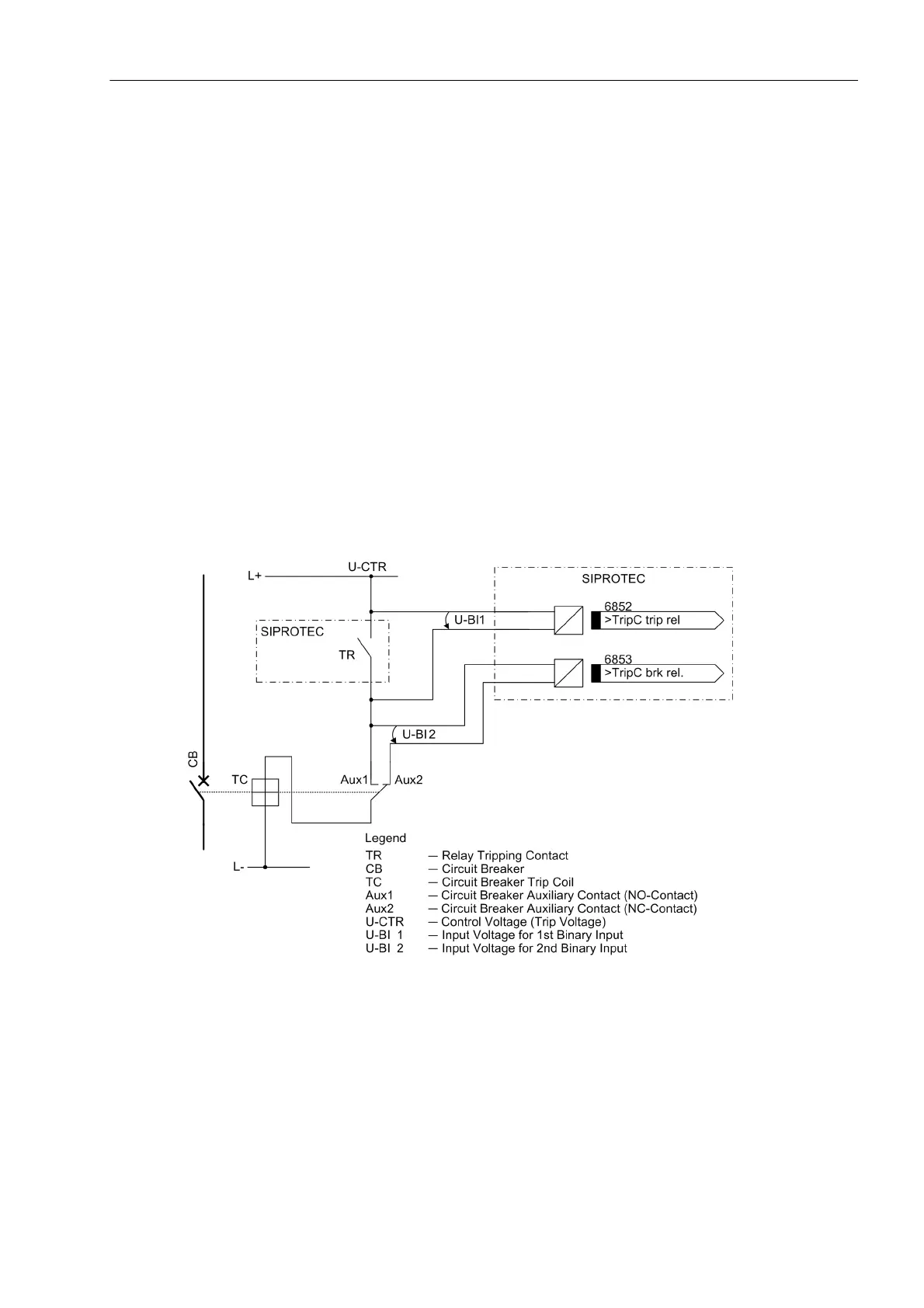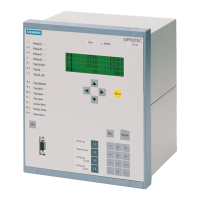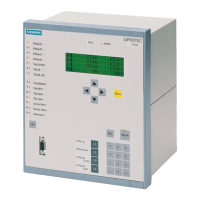Functions
2.43 Trip Circuit Supervision
SIPROTEC, 7UM62, Manual
C53000-G1176-C149-7, Release date 03.2010
295
2.43 Trip Circuit Supervision
The 7UM62 multifunctional protection features an integrated trip circuit supervision. Depending on the number
of available binary inputs (connected or not connected to a common potential), monitoring with one or two
binary inputs can be selected. If the allocation of the necessary binary inputs does not comply with the selected
monitoring mode, a corresponding message will be displayed („TripC ProgFail“). When using two binary
inputs, malfunctions in the trip circuit can be detected for all circuit breaker positions. When only one binary
input is used, malfunctions in the circuit breaker itself cannot be detected.
2.43.1 Functional Description
Monitoring with Two Binary Inputs (not connected to common potential)
When using two binary inputs, these are connected according to the figure below, parallel to the associated trip
contact on one side, and parallel to the circuit breaker auxiliary contacts on the other.
A precondition for the use of the trip circuit supervision is that the control voltage for the circuit breaker is higher
than the total of the minimum voltages drops at the two binary inputs (U
CTRL
> 2 · U
BImin
). Since at least 19 V
are needed for each binary input, the monitor can only be used with a system control voltage of over 38 V.
Figure 2-136 Principle of trip circuit monitor with two binary inputs (not connected to common potential)
Monitoring with binary inputs not only detects interruptions in the trip circuit and loss of control voltage, it also
monitors the response of the circuit breaker using the position of the circuit breaker auxiliary contacts.
Depending on the switching state of the trip relay and circuit breaker, the binary inputs are initiated (logic state
„H“ in Table 2-15) or short circuited (logic state „L“).

